Family: Tenthredinidae
Family common name: common sawflies
Subfamily: Blennocampinae
Tribe: Blennocampini
Genus: Apareophora Sato, 1928
Subgenera: none
The Tenthredinidae are the most species-rich family and are found throughout the world, in all continents but Antarctica. They are known as the “common sawflies.” They can generally be recognized by a cylindrical body and long, segmented antennaeantenna:
the sensory organ emerging from the front of the head, usually between the compound eyes and above the clypeus; includes the flagellum, scape and pedicel
 . Otherwise, they come in a variety of colors, sizes, and forms (Goulet 1992Goulet 1992:
. Otherwise, they come in a variety of colors, sizes, and forms (Goulet 1992Goulet 1992:
Goulet H. 1992. The genera and subgenera of the sawflies of Canada and Alaska: Hymenoptera. Symphyta. The insects and arachnids of Canada. Part 20. Agriculture Canada Publication.).
Sawflies in the subfamily Blennocampinae have a diverse set of life histories and habits. Many species are restricted to subtropical and tropical regions, but the genus is still fairly species-rich in North America. Blennocampinae includes many sawflies that feed on ornamental and forestry crops. This subfamily can be recognized by wing venationvenation:
the network of veins on a wing
and bidentatebidentate:
having two teeth; often used in descrbing mandibles or tarsal claws
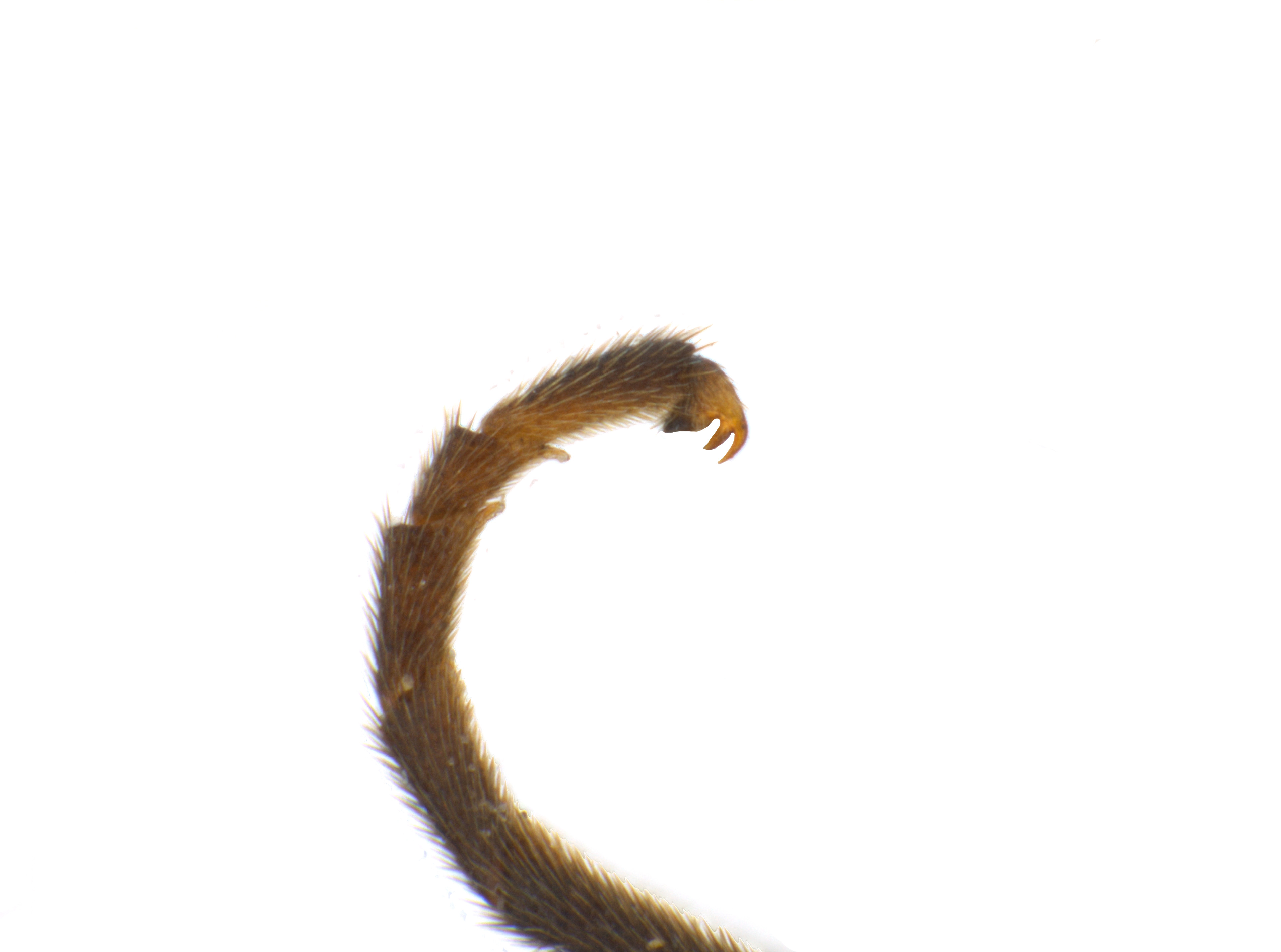 mandibles (Smith 1969dSmith 1969d:
mandibles (Smith 1969dSmith 1969d:
Smith DR. 1969d. Nearctic Sawflies. I. Blennocampinae: Adults and larvae (Hymenoptera: Tenthredinidae). Technical Bulletin, U.S. Department of Agriculture 1397: 1-176.).
Apareophora is medium-sized, about 6.5 mm in length and entirely black, with light-colored striping on the legs and hyalinehyaline:
transparent; glassy
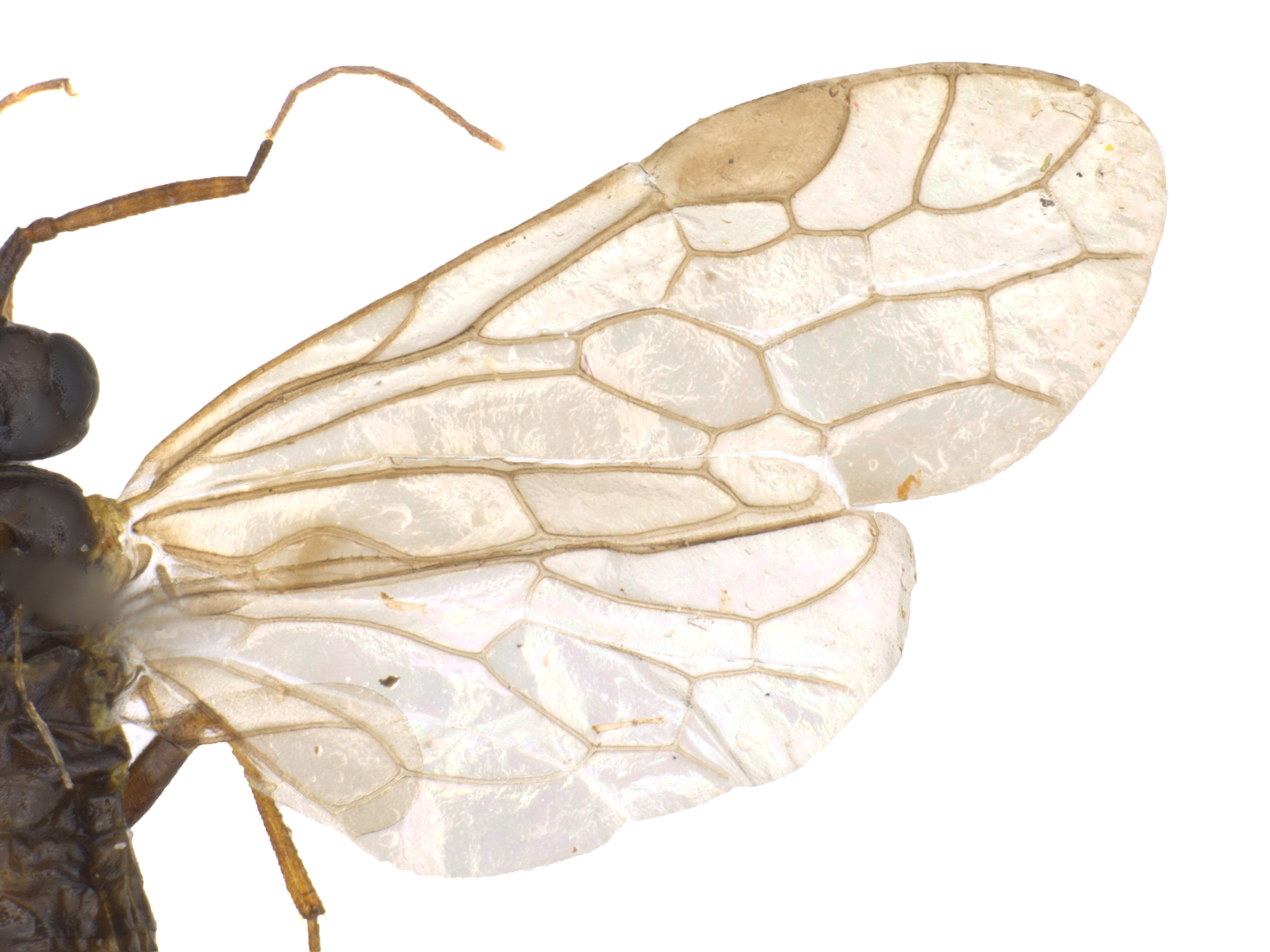 wings (Smith 1969dSmith 1969d:
wings (Smith 1969dSmith 1969d:
Smith DR. 1969d. Nearctic Sawflies. I. Blennocampinae: Adults and larvae (Hymenoptera: Tenthredinidae). Technical Bulletin, U.S. Department of Agriculture 1397: 1-176.).
There are 9 described extantextant:
in existence; opposite of extinct
species worldwide. Two species occur in North America (Taeger et al. 2018Taeger et al. 2018:
Taeger A, Liston AD, Prous M, Groll EK, Gehroldt T, and Blank SM. 2018. ECatSymmdash;Electronic World Catalog of Symphyta (Insecta, Hymenoptera). Program version 5.0 (19 Dec 2018), data version 40 (23 Sep 2018). Senckenberg Deutsches Entomologisches Institut (SDEI), Muuml;ncheberg. https://sdei.de/ecatsym/ Accessed: 28 Jan 2020.).
A key to North American species is included in Smith 1969dSmith 1969d:
Smith DR. 1969d. Nearctic Sawflies. I. Blennocampinae: Adults and larvae (Hymenoptera: Tenthredinidae). Technical Bulletin, U.S. Department of Agriculture 1397: 1-176..
Subfamily characters
 veins Cu1 and 1m-cu between 120°–150° (Goulet 1992Goulet 1992:
veins Cu1 and 1m-cu between 120°–150° (Goulet 1992Goulet 1992: veins M and 1m-cu parallel (Smith 1969dSmith 1969d:
veins M and 1m-cu parallel (Smith 1969dSmith 1969d: veins 2A and 3A incomplete (Smith 1969dSmith 1969d:
veins 2A and 3A incomplete (Smith 1969dSmith 1969d:Genus characters
 as wide as long (Smith 1969dSmith 1969d:
as wide as long (Smith 1969dSmith 1969d: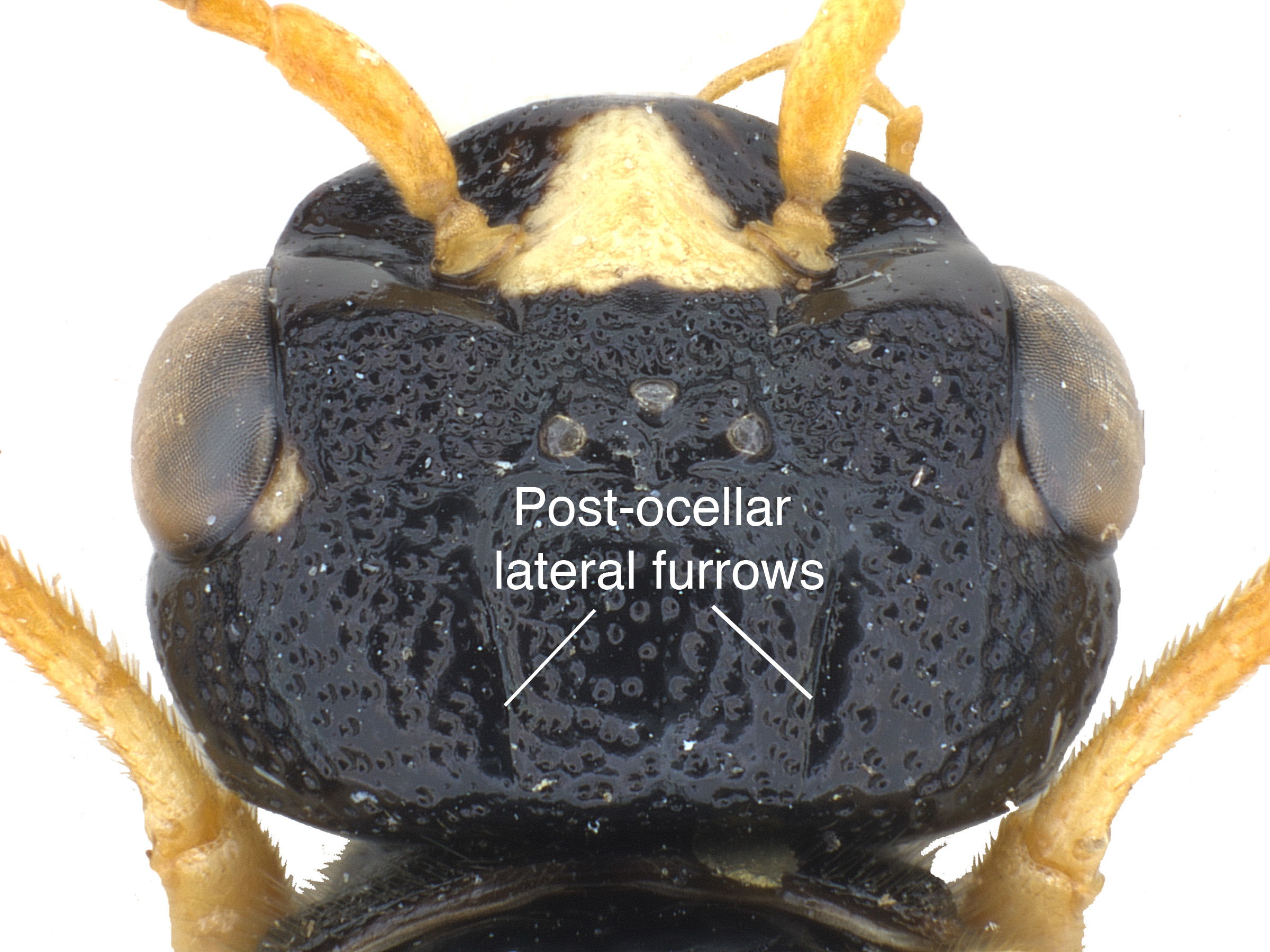 absent, or very narrow and shallow (Smith 1969dSmith 1969d:
absent, or very narrow and shallow (Smith 1969dSmith 1969d: veins 2A and 3A curved at apexapex:
veins 2A and 3A curved at apexapex: cellcell:
cellcell: M absent (Smith 1969dSmith 1969d:
M absent (Smith 1969dSmith 1969d: veins M, Rs+M and Sc+R all meeting at one junction (Smith 1969dSmith 1969d:
veins M, Rs+M and Sc+R all meeting at one junction (Smith 1969dSmith 1969d: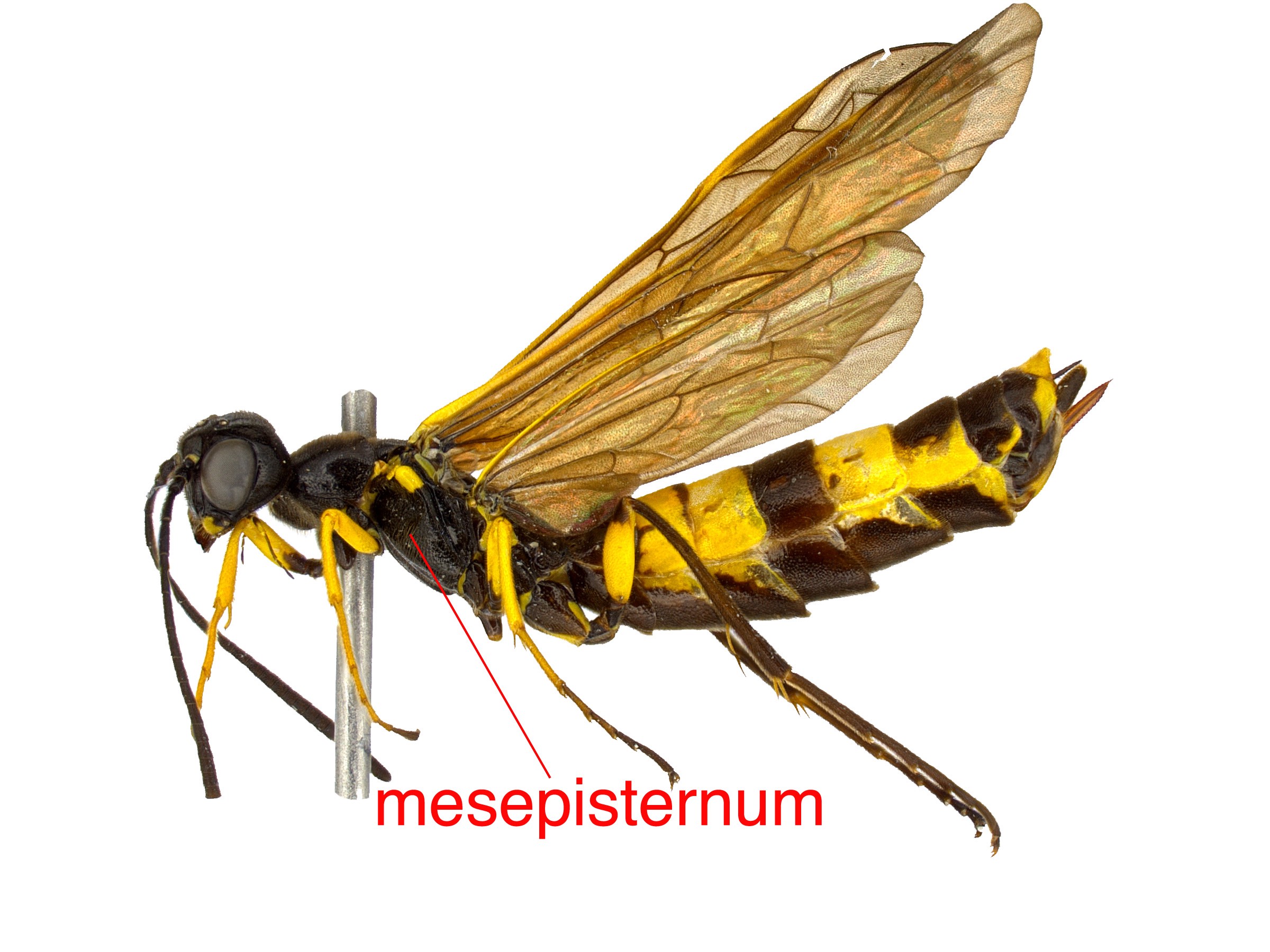 surface rough and not shining (Goulet 1992Goulet 1992:
surface rough and not shining (Goulet 1992Goulet 1992: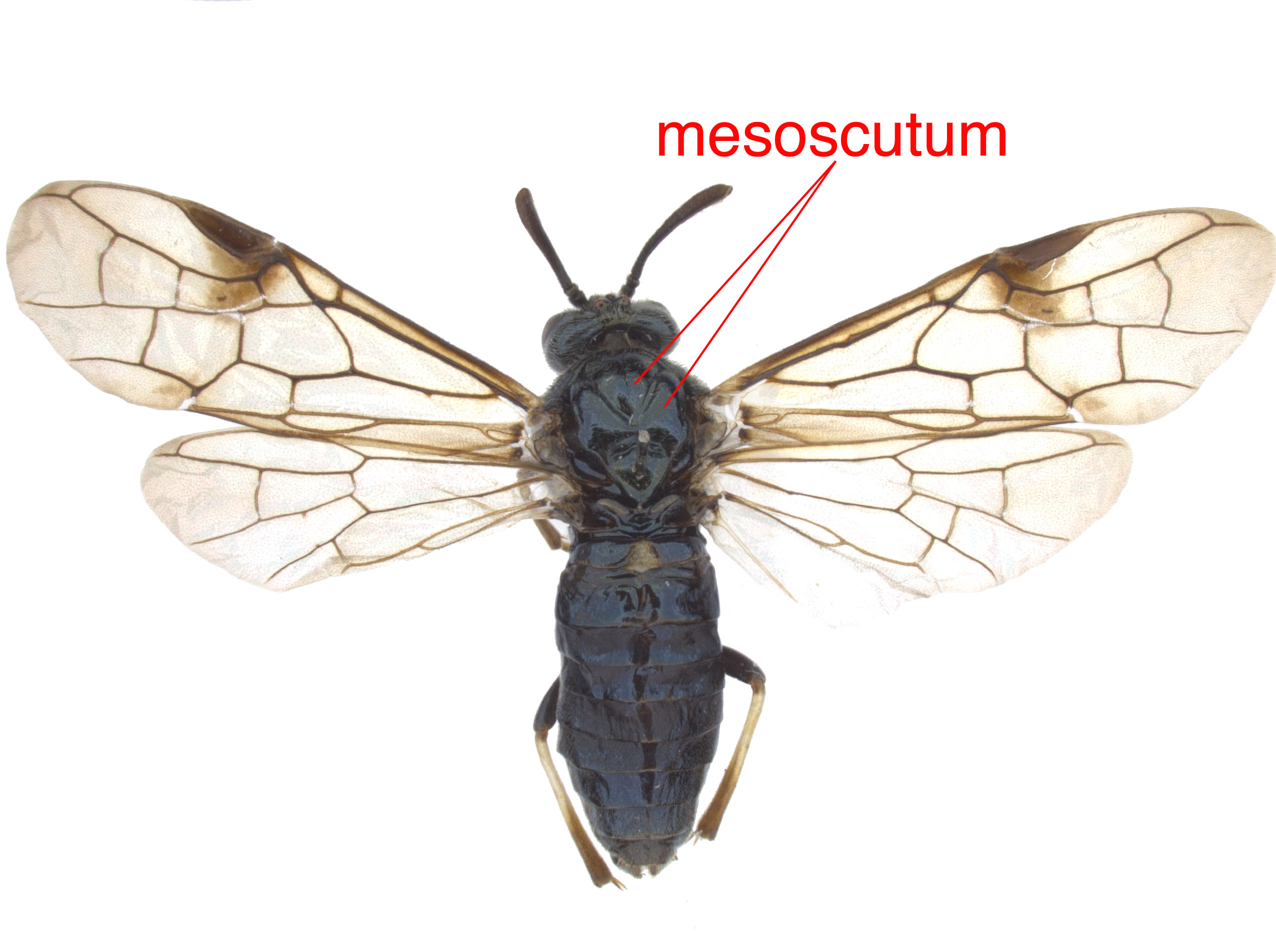 with small pits (Goulet 1992Goulet 1992:
with small pits (Goulet 1992Goulet 1992: simple (Smith 1969dSmith 1969d:
simple (Smith 1969dSmith 1969d:Apareophora can be confused with similar species in the subfamily Blennocampinae. It can be distinguished from most other genera by the simple tarsal clawtarsal claw:
sharpened appendage emerging from the apex of the tarsus
 , absence of hind winghind wing:
, absence of hind winghind wing:
the posterior wing of each pair of wings
 cellcell:
cellcell:
1. a membranous area of the wing between veins, 2. a small cavity or closed space
 M, and a narrow malar spacemalar space:
M, and a narrow malar spacemalar space:
the minimum distance between the base of the mandible and the ventral margin of the compound eye
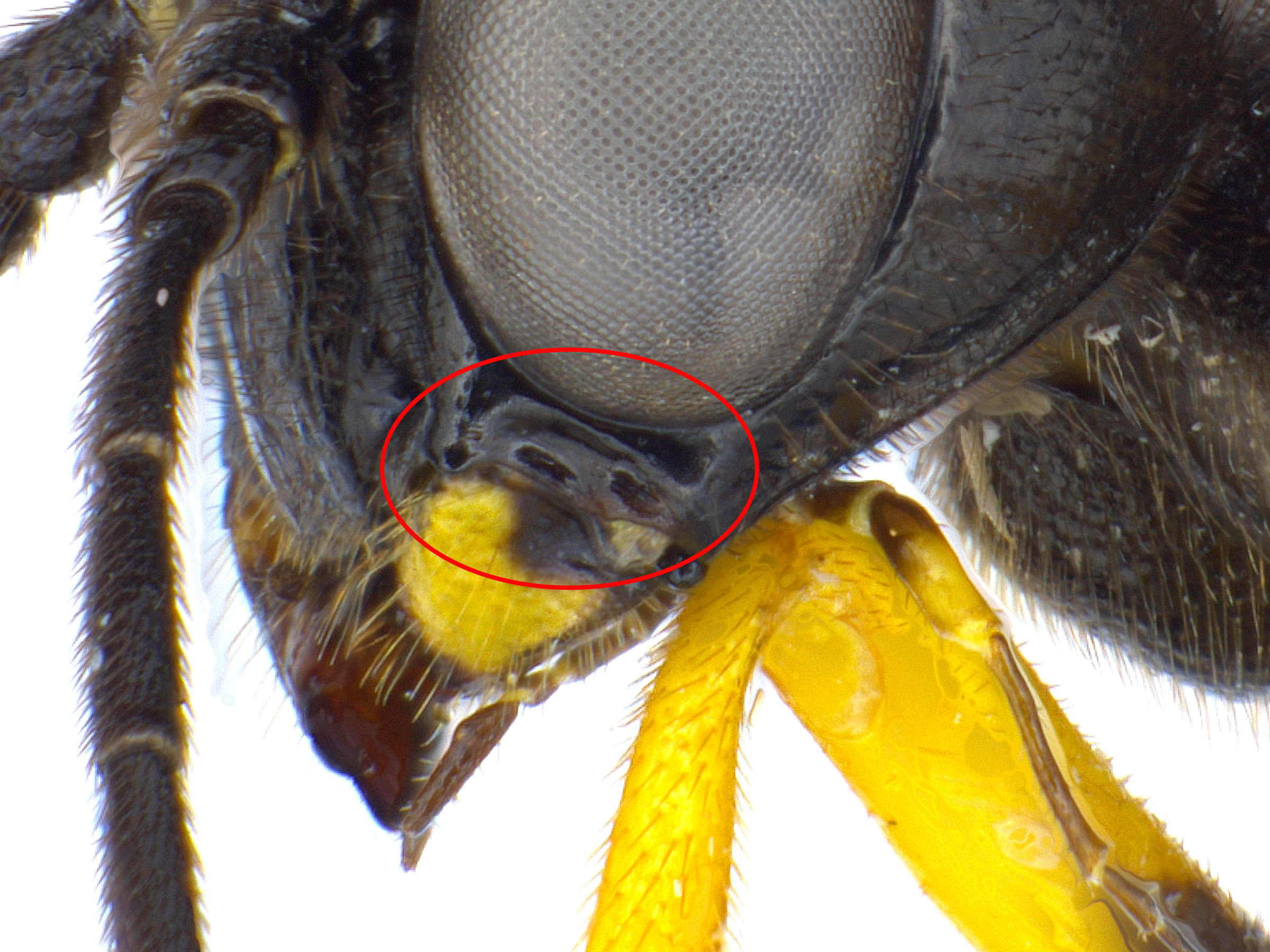 (Smith 1969dSmith 1969d:
(Smith 1969dSmith 1969d:
Smith DR. 1969d. Nearctic Sawflies. I. Blennocampinae: Adults and larvae (Hymenoptera: Tenthredinidae). Technical Bulletin, U.S. Department of Agriculture 1397: 1-176.).
Apareophora forsythiae, also known as the forsythia sawfly, is a minor pest in South Korea (Park and Lee 1993Park and Lee 1993:
Park CH and Lee BY. 1993. Life history of the forsythia sawfly, Apareophora forsythiae Sato (Hymenoptera: Tenthredinidae). Korean Journal of Applied Entomology 32 (4): 457-459.).
In North America, Apareophora feeds on Spirea (meadowsweet), including Spirea salicifolia (willowleaf meadowsweet) (Smith 1969dSmith 1969d:
Smith DR. 1969d. Nearctic Sawflies. I. Blennocampinae: Adults and larvae (Hymenoptera: Tenthredinidae). Technical Bulletin, U.S. Department of Agriculture 1397: 1-176., Goulet 1992Goulet 1992:
Goulet H. 1992. The genera and subgenera of the sawflies of Canada and Alaska: Hymenoptera. Symphyta. The insects and arachnids of Canada. Part 20. Agriculture Canada Publication.).
unknown
World: This genus is known from North America and in East Asia: Korea, China, and Japan (Taeger et al. 2018Taeger et al. 2018:
Taeger A, Liston AD, Prous M, Groll EK, Gehroldt T, and Blank SM. 2018. ECatSymmdash;Electronic World Catalog of Symphyta (Insecta, Hymenoptera). Program version 5.0 (19 Dec 2018), data version 40 (23 Sep 2018). Senckenberg Deutsches Entomologisches Institut (SDEI), Muuml;ncheberg. https://sdei.de/ecatsym/ Accessed: 28 Jan 2020.).
North America: Apareophora occurs in southeastern Canada and the northeastern United States west through the Great Lakes region (Smith 1969dSmith 1969d:
Smith DR. 1969d. Nearctic Sawflies. I. Blennocampinae: Adults and larvae (Hymenoptera: Tenthredinidae). Technical Bulletin, U.S. Department of Agriculture 1397: 1-176.).
Map data from: GBIF.org (29 October 2019) GBIF Occurrence Download Apareophora and the Smithsonian National Museum of Natural History Entomology Collection (USNM)
Details about data used for maps can be found here.